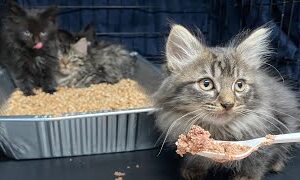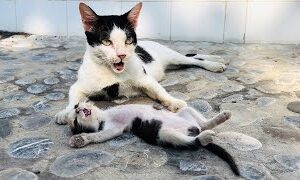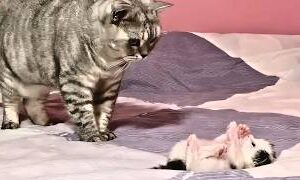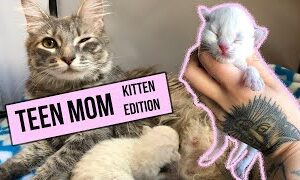In the heart of a bustling city, amidst the towering skyscrapers and the ceaseless hum of urban life, there lived a rather peculiar feline named Odin. Odin was no ordinary cat. He was a white Scottish Fold with a heart of gold and a pair of mesmerizing eyes, one blue and one yellow.
Odin’s heterochromia, the condition of having differently colored eyes, made him stand out from other cats. His unique appearance, combined with his playful personality, made him a beloved member of his human family, the Smiths.
The Smiths were fascinated by Odin’s odd-eyed charm. They would often spend hours observing him, marveling at his striking appearance and his gentle nature. They would take him on walks, introducing him to new sights and sounds, and sharing their love and affection with him.
One day, a renowned feline expert, Dr. Evelyn Harper, heard about Odin’s unique condition. Intrigued by the feline phenomenon, she decided to study Odin in depth. She hoped to understand the genetic factors that contribute to heterochromia and to learn more about the visual perception of cats with different colored eyes.
Dr. Harper spent countless hours observing Odin, analyzing his DNA, and conducting various tests. She discovered that Odin’s heterochromia was caused by a genetic mutation that affected the production of melanin, the pigment responsible for eye color.
Dr. Harper’s research shed new light on the complex genetics of feline eye color. Her findings have implications for understanding human eye color and other genetic disorders.
Odin’s story continues to inspire and amaze. He is a symbol of hope, a reminder that even the most unusual of creatures can have a profound impact on the world. His unique appearance has made him a beloved figure, a testament to the beauty of diversity.
And so, Odin, the odd-eyed feline, lives on, a beacon of hope for all those who are different. His story is a reminder that even in a world that often values conformity, individuality can be celebrated and embraced.






